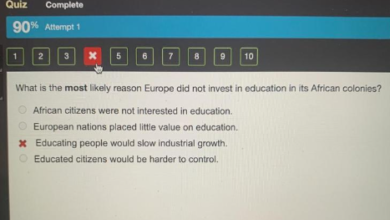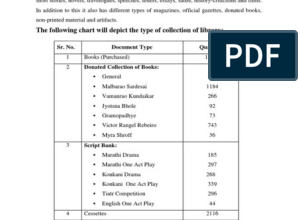Mastering Plot Summaries: 5 Key Ideas for Building Conflict

Mastering Plot Summaries: 5 Key Ideas for Building Conflict. Discover the essential elements of a plot by paying attention to the conflict’s development. Summarize with ease using our practical tips. Start now!
Mastering Plot Summaries: 5 Key Ideas for Building Conflict
Mastering Plot Summaries: 5 Key Ideas for Building Conflict. to the conflict’s Mastering Plot Summaries: 5 Key Ideas for Building Conflict
Contents
- 1 Overview
- 2 Subheading: Understanding the Conflict
- 3 Subheading: The Beginning of the Conflict
- 4 Subheading: Rising Action and Conflict Development
- 5 Subheading: The Climax – The Peak of the Conflict
- 6 Subheading: Resolving the Conflict
- 7 Subheading: Final Thoughts
- 8 The Art of Summarizing a Plot: Understanding Key Ideas and Conflict Building
- 9 Introduction
- 10 Understanding the Complexity of Summarizing a Plot
- 11 The Dynamics of Summarizing a Plot
- 12 The Role of Conflict in Building a Plot
- 13 Five Key Ideas to Notice When Summarizing a Plot
- 14 Conclusion
Overview
When we read a book or watch a movie, we are essentially experiencing a story unfold before us. And at the heart of every story is a conflict – a problem or struggle that the characters must face and ultimately resolve. As readers or viewers, it is important to understand how this conflict builds throughout the plot, as it drives the action and development of the story. In this blog post, we will delve into the intricacies of summarizing the plot and examine the key ideas to notice as we follow the conflict build. This will not only enhance our understanding of the story but also help us become better storytellers ourselves.
Subheading: Understanding the Conflict
Before we can dive into the nuances of summarizing the conflict, it is crucial to understand what constitutes a conflict. At its most basic level, a conflict is a struggle between two opposing forces. This could be a person versus another person, a person against society, or even a person fighting against themselves. The conflict should be at the forefront of the story and the driving force of the plot.
When summarizing a plot, it is important to remember that the conflict itself should not be summarized. Instead, it should be woven into the summary as it is a crucial aspect of the story. Consider the conflict as the backbone of the plot, with the other story elements build upon it.
Subheading: The Beginning of the Conflict
Every story has a beginning, and this is where the conflict is introduced. As readers or viewers, we are presented with the initial problem that the characters will face. This serves as the catalyst for the entire story. For example, in the book “The Hunger Games,” we are introduced to Katniss Everdeen, who volunteers to take her sister’s place in the annual Hunger Games. This is the first glimpse of the conflict in the story.
As we summarize the plot, it is important to note the introduction of the conflict and highlight any key details or events that set it in motion. This will provide the necessary context for the rest of the story and help readers or viewers understand the characters’ motivations and choices.
Subheading: Rising Action and Conflict Development
As the story progresses, the conflict continues to build and evolve. This is where the rising action comes into play. In this stage, the conflict becomes more complicated, and the characters are faced with various obstacles and challenges. This is also where we see the characters’ motivations and relationships begin to unravel.
When summarizing the plot, it is essential to highlight the rising action and the conflict’s development. This could include key events, plot twists, or character development that contribute to the conflict’s growth. It is important to also pay attention to the pacing and intensity of the conflict during this stage, as it sets the tone for the rest of the story.
Subheading: The Climax – The Peak of the Conflict
The climax is often considered the most crucial part of the story as it is the peak of the conflict. It is where the tension and stakes are at their highest. This is also where the main characters’ choices and actions will ultimately determine the outcome of the conflict. In the Hunger Games, the climax occurs during the final showdown between Katniss and her rival, Cato.
When summarizing the plot, the climax should be given special attention as it is the turning point in the story. Take note of the key events or decisions that lead to the climax and how they shape the conflict and the characters’ actions.
Subheading: Resolving the Conflict
After the climactic moment, the story begins to wrap up and reach its conclusion. This is where the conflict is resolved, and the aftermath of the characters’ actions is revealed. It is important to note that the resolution may not always be a happy one, but it should provide closure for the story’s main conflict.
When summarizing the plot, be sure to include the resolution and how the conflict is ultimately resolved. This could include the consequences of the characters’ actions and any loose ends that are tied up. The resolution not only provides closure but also serves as a reflection of the conflict’s impact on the characters and the story as a whole.
Subheading: Final Thoughts
In conclusion, summarizing the plot is more than just retelling the events of a story. It is about understanding the key ideas and elements, such as the conflict, that shape the story and make it compelling. By paying attention to how the conflict develops, we can gain a deeper understanding of the characters and their motivations. This, in turn, can help us become better storytellers ourselves.
Next time you read a book or watch a movie, be sure to notice how the conflict builds and evolves. Pay attention to the key events and decisions that drive the story forward. This will not only enhance your enjoyment of the story but also your understanding of how a good conflict can propel a plot to new heights.
Mastering Plot Summaries: 5 Key Ideas for Building Conflict
Discover the essential elements of a plot by paying attention to the conflict’s development. Summarize with ease using our practical tips. Start now!. summarizing Mastering Plot Summaries: 5 Key Ideas for Building Conflict
Mastering Plot Summaries: 5 Key Ideas for Building Conflict
The Art of Summarizing a Plot: Understanding Key Ideas and Conflict Building
Introduction
When summarizing a plot, one of the key elements you need to pay attention to is how the conflict builds. A plot can be defined as the sequence of events that make up a story, and conflict is the driving force that moves the plot forward. Without conflict, a story lacks tension and the audience’s interest can wane. Understanding the key ideas behind how the conflict builds is essential to effectively summarizing a plot.
Understanding the Complexity of Summarizing a Plot
Summarizing a plot is no easy task. It requires careful analysis and understanding of the story’s key elements. But what makes a plot summary complex?
Firstly, the level of complexity depends on the length of the story. A short story will have fewer plot points and conflicts compared to a novel. This means that summarizing a longer story entails more critical thinking and careful selection of key ideas.
Additionally, different stories have varying levels of complexity and depth. Some stories may have a straightforward plotline, while others may have multiple subplots and conflicts. This means that a plot summary must capture the essence of the story without oversimplifying or leaving out crucial details.
Furthermore, summarizing a plot requires a balance between too much and too little information. Providing too much detail can make the summary long and tedious, while too little information can leave the reader confused and uninterested. It’s important to find the right balance and focus on the key ideas that drive the conflict.
The Dynamics of Summarizing a Plot
Summarizing a plot involves more than just retelling the events that occur. It requires an understanding of the dynamics within the context of the story. For example, the characters’ motives, actions, and relationships all play a crucial role in building the conflict of a story. Therefore, it’s important to pay attention to the character development and interactions to accurately summarize the plot.
Another dynamic to consider is the timeline of events. Stories can be told in chronological or non-chronological order, and this can affect the overall flow and impact of the plot. It’s essential to capture the timeline accurately, as it can have a significant impact on the reader’s understanding of the conflict and key ideas.
The Role of Conflict in Building a Plot
Conflict is the driving force that propels the plot and keeps the audience engaged. Without conflict, a story lacks tension and can become dull and uninteresting. There are various types of conflict, including internal and external conflicts, and they all serve to create obstacles for the protagonist. It’s crucial to identify and understand the type of conflict in a story to effectively summarize the plot.
Additionally, the conflict must escalate and build in intensity to maintain the audience’s interest. This is known as the rising action and is a critical element in building a compelling plot. Without a strong conflict that continues to intensify, the story can feel stagnant and uneventful. Therefore, when summarizing a plot, it’s essential to highlight the key conflicts and their progression to accurately represent the story.
Five Key Ideas to Notice When Summarizing a Plot
1. The Inciting Incident
The inciting incident is the event that sets the story in motion and creates the initial conflict for the protagonist. It’s the first hurdle they must face, and it often occurs within the first scene or chapter. The inciting incident can be a significant event or a series of smaller events, but it’s crucial to identify it as it’s the catalyst for the entire story.
2. The Protagonist’s Goal
The protagonist’s goal is their primary motivation throughout the story. It’s what they strive to achieve despite the obstacles and conflicts they face. The goal can change throughout the story, but it’s essential to identify the protagonist’s initial and ultimate goal to accurately summarize the plot.
3. The Antagonist and Their Motives
The antagonist is the character or force that opposes the protagonist and creates obstacles for them to overcome. Understanding the antagonist’s motives is crucial in understanding the conflict and summarizing the plot. Without clear motives, the antagonist’s actions may seem random and ineffective, making the plot less engaging.
4. The Rising Action
As mentioned earlier, the rising action is the series of conflicts and obstacles that continue to escalate throughout the story. It’s essential to capture the progression of the rising action accurately as it leads to the story’s climax.
5. The Climax and Resolution
The climax is the peak of the conflict, where the protagonist and antagonist come face to face in a final showdown. It’s a crucial moment in the story, and the outcome of the conflict determines the resolution. Summarizing the climax and resolution is essential in accurately summarizing the plot and capturing the key ideas behind the conflict.
Conclusion
In conclusion, summarizing a plot effectively requires a deep understanding of the key ideas that drive the conflict. It entails analyzing the story’s dynamics, identifying the central conflicts, and paying attention to the characters’ motives and relationships. By following the tips outlined in this article, you can improve your plot summarizing skills and provide a comprehensive and engaging summary that captivates the reader’s interest. Mastering Plot Summaries: 5 Key Ideas for Building Conflict

1. What is the conflict present in a plot?
Ans: In a plot, conflict represents a struggle between opposing forces, characters, events, or interrelated themes that drive the story forward. It is essential to identify the main issue or problem developed by this conflict as it helps to drive the story’s twists and turns.
2. How does the conflict build in a plot?
Ans: The conflict in a plot evolves from a series of events or challenges that arise, forcing the protagonist to take action. It usually starts with a minor issue and gradually progresses to a point of escalation, where the protagonist is pushed to their limits to resolve the conflict and come out victorious.
3. What key ideas should be noticed when summarizing a plot’s conflict?
Ans: When summarizing the conflict in a plot, one should pay attention to the central issue, the opposing forces involved, and how they affect the main characters. It is also crucial to identify the stakes and consequences of the conflict, as well as the resolution or outcome of the story. These key ideas help to provide a concise and comprehensive summary of the plot’s conflict. Mastering Plot Summaries: 5 Key Ideas for Building Conflict



